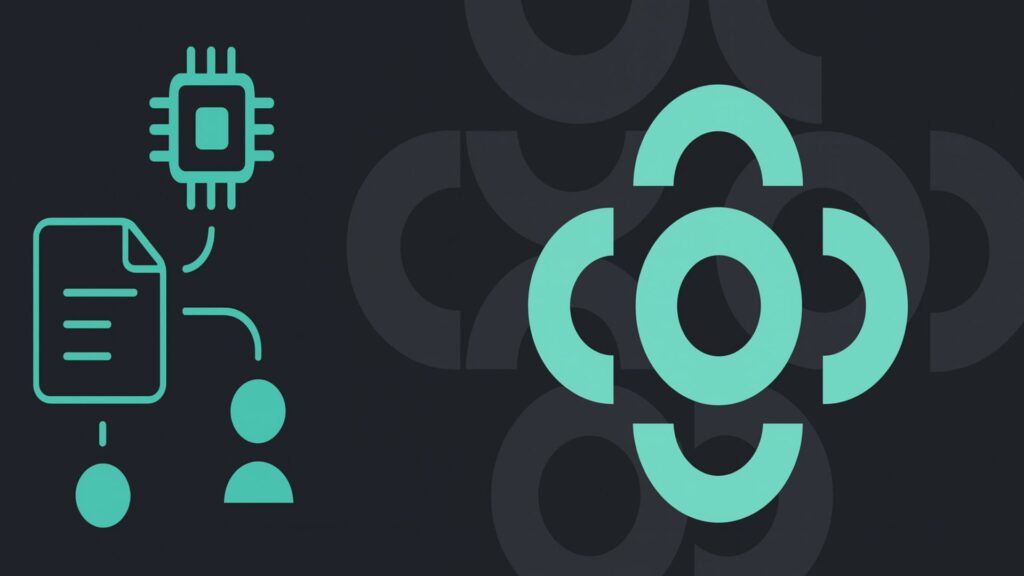The COAI token has surged by 100% in the past 24 hours, placing ChainOpera AI firmly in the spotlight. Such a sharp move has fuelled questions about the project itself, its foundations, and what the token represents.
ChainOpera AI is positioning itself at the intersection of artificial intelligence and decentralised networks, with the ambition of making intelligence creation a community-driven process rather than one dominated by large technology firms.
By combining blockchain with collaborative AI agents, the project seeks to align developers, users, and infrastructure providers in a shared ecosystem.
This article will explore what ChainOpera AI is, how its infrastructure is built, the kinds of AI agents it enables, and how the COAI token functions within this framework.
What is ChainOpera AI?
ChainOpera AI describes itself as a network for collaborative intelligence. Instead of relying on one centralised model, the platform connects many AI agents, each with specialised tasks, and coordinates them through a shared infrastructure.
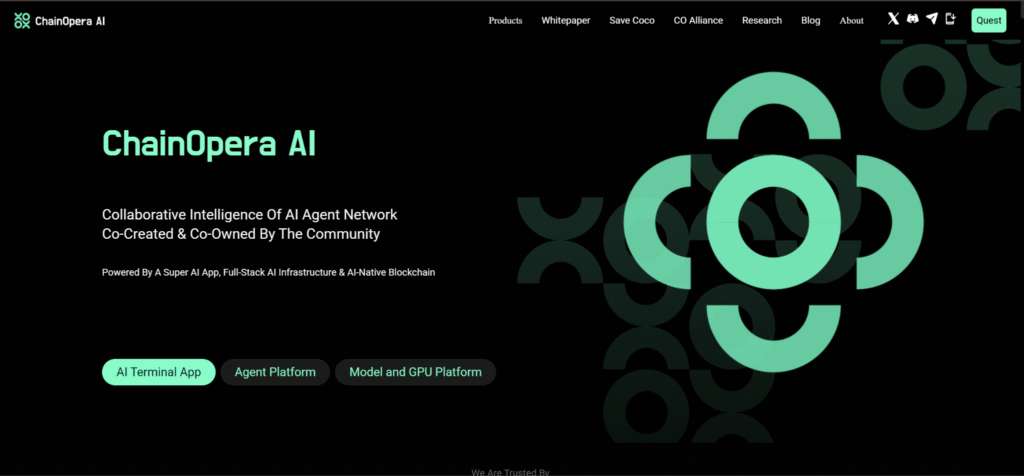
The result is not a single intelligence but an evolving system where every agent, user, and contributor adds to the collective outcome.
The ecosystem is built around a vision of co-ownership. Agents are developed and deployed by the community. GPU providers, data contributors, and model developers bring resources.
Every day, users interact with agents, contributing feedback and data that help refine them. All of these interactions are recorded and acknowledged on-chain, creating transparency and fairness in attribution.
ChainOpera is not only about AI in isolation. It also connects directly with decentralised finance. Its thesis is that two revolutions, AI and crypto, can reinforce one another.
AI provides accessibility and intelligence layers for navigating complex markets, while blockchain ensures trust, distribution, and shared ownership. By bridging these domains, ChainOpera aims to create an open collaborative AI economy.
How Does the Infrastructure Work?
The ChainOpera ecosystem is structured into four layers, each playing a specific role.
The AI Super App Layer is the entry point for users. Known as the AI Terminal, it allows people to interact with community-built AI agents.
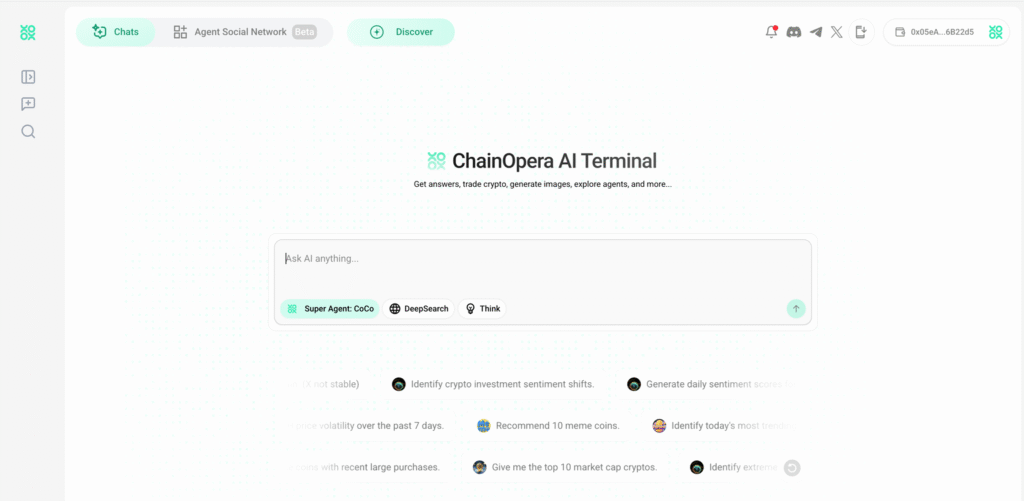
These agents can provide services in decentralised finance, payments, commerce, and beyond. Users maintain control over their data and can shape the behaviour of their personal agents.
The AI Terminal also functions as a social network, where agents created by developers are visible and accessible to millions.
The Agent Developer Platform Layer is the environment for building and launching agents. Developers can use a zero-code system, templates, or deeper integrations with the Agent SDK to create AI agents for web, mobile, and third-party applications.
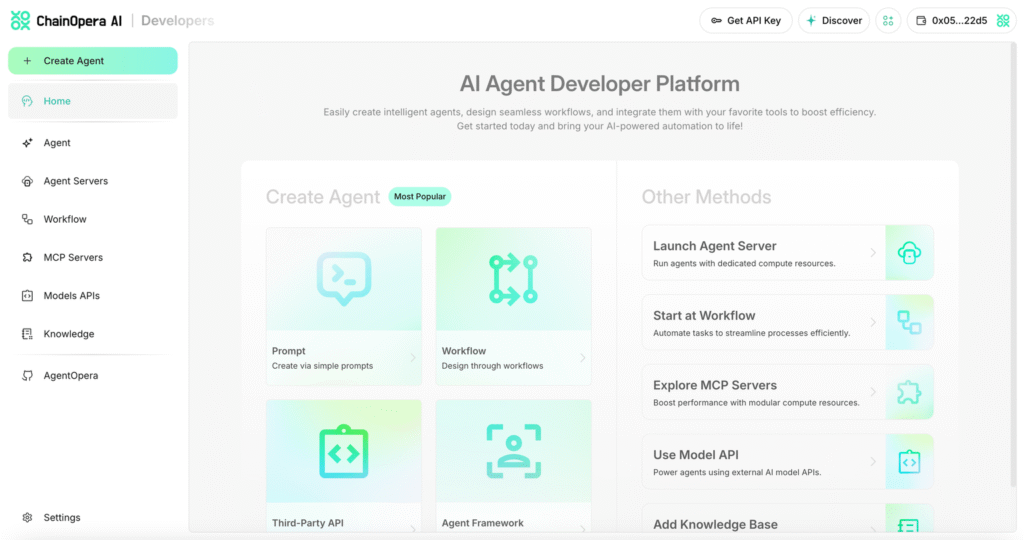
Agents on this platform are not isolated but designed to collaborate, share capabilities, and build workflows together. This collaborative design enhances their collective power and drives network effects across the ecosystem.
The Decentralised Model and GPU Layer provides the computing backbone. It combines distributed GPU power, model APIs, and a federated execution layer to train and serve AI at scale.
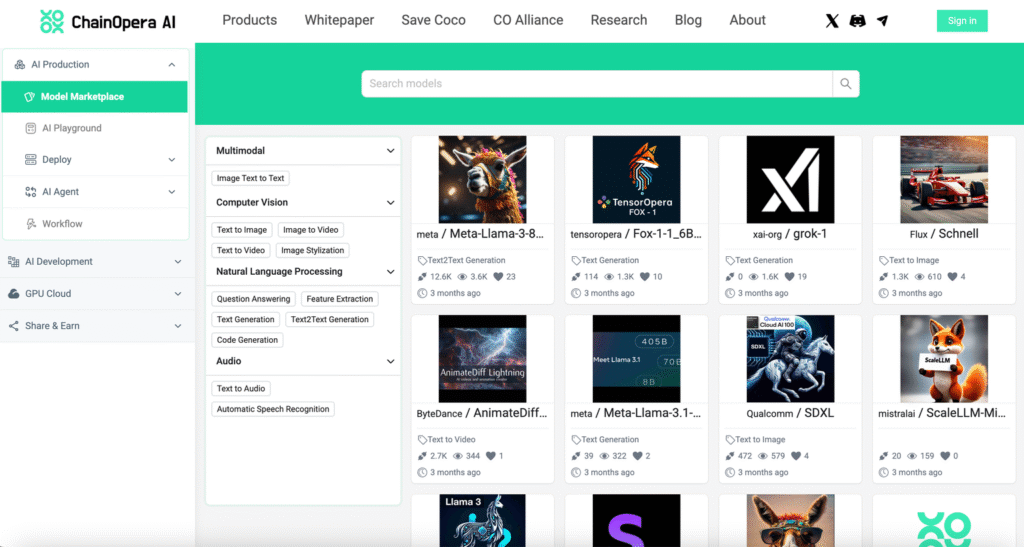
Resource providers contribute GPUs, models, or datasets, which are then made available for the network in a verifiable and transparent way. This structure reduces dependence on centralised cloud providers while ensuring privacy-preserving model training through federated learning.
The Blockchain Protocol Layer connects all participants and secures the system. Using the Proof of Intelligence mechanism it ensures that contributions, whether computing power, data annotation, or agent development, are recorded and verifiable on-chain.
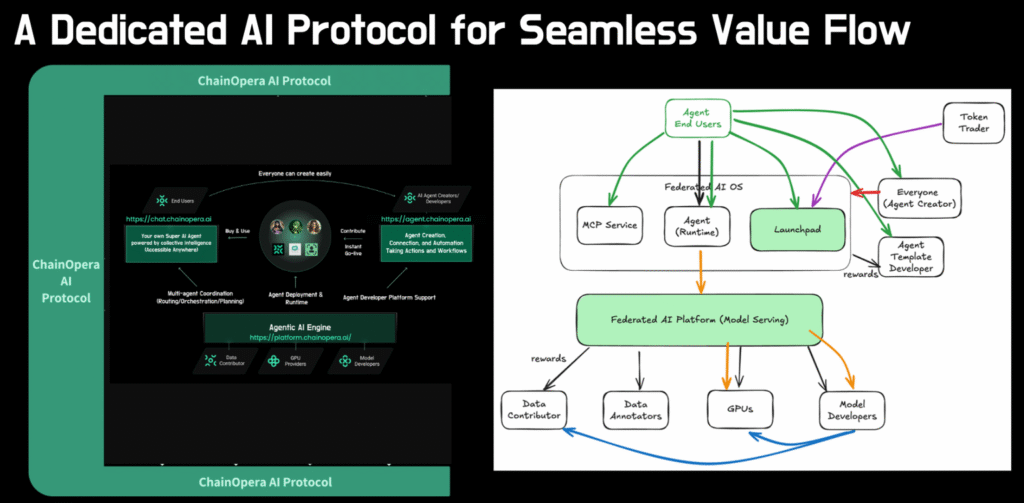
This mechanism guarantees trust while making recognition fair across all types of participants. The result is an ecosystem where users, developers, and resource providers each play a visible and valued role.
Together, these layers form a self-reinforcing flywheel. Users gain access to intelligent services, developers distribute their creations to a wide audience, and resource providers earn recognition for their contributions.
Every action strengthens the network, helping it grow into a more comprehensive collaborative AI system.
What AI Agents Can You Build with ChainOpera AI?
One of the most distinctive features of ChainOpera is its support for a wide variety of AI agents. Through the AI Terminal, developers and users can design agents across multiple domains.
In finance, agents can act as assistants for decentralised trading, payments, or real-world asset tokenisation. They can simplify complex workflows, automate strategies, or provide intelligent insights.
In commerce, agents may handle personalised recommendations or customer interactions. Productivity agents can manage scheduling or optimise tasks, while creative agents can generate written or visual content.
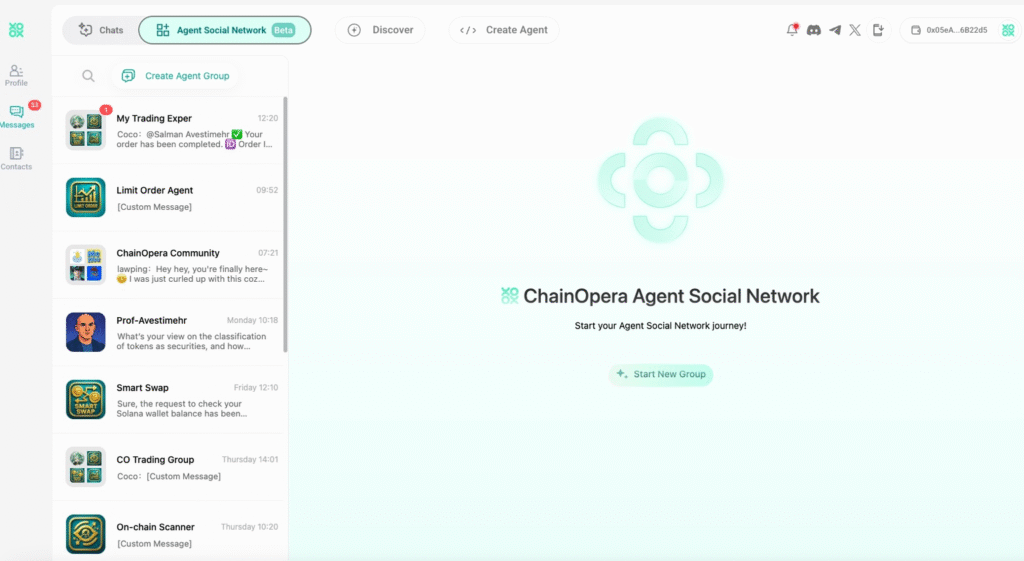
ChainOpera also supports the concept of an AI Agent Social Network. In this environment, agents interact not only with humans but also with each other.
Using frameworks like MetaGPT, AutoGEN, ChatDEV, and Camel, agents can collaborate, divide responsibilities, and combine skills to solve multi-step workflows. This transforms agents from individual tools into part of a digital society where collaboration is central.
Beyond software, ChainOpera is exploring AI hardware integration. The project works with partners on DeAI Phones, wearable devices, and robotics. These devices allow on-device computation, preserve user privacy, and connect directly with blockchain protocols.
The idea is to extend AI beyond the desktop or server and into daily life, where agents can operate securely and independently.
The infrastructure also draws on earlier projects like TensorOpera AI and FedML. TensorOpera provides decentralised cloud services for training and serving AI models, while FedML offers federated learning across devices, enabling models to be trained without centralising sensitive data.
These foundations add depth to ChainOpera’s technical stack and show its roots in long-term decentralised AI research.
The COAI Token
The COAI token is the functional utility that powers the ChainOpera ecosystem. It is not positioned as an equity instrument but as a coordination tool.
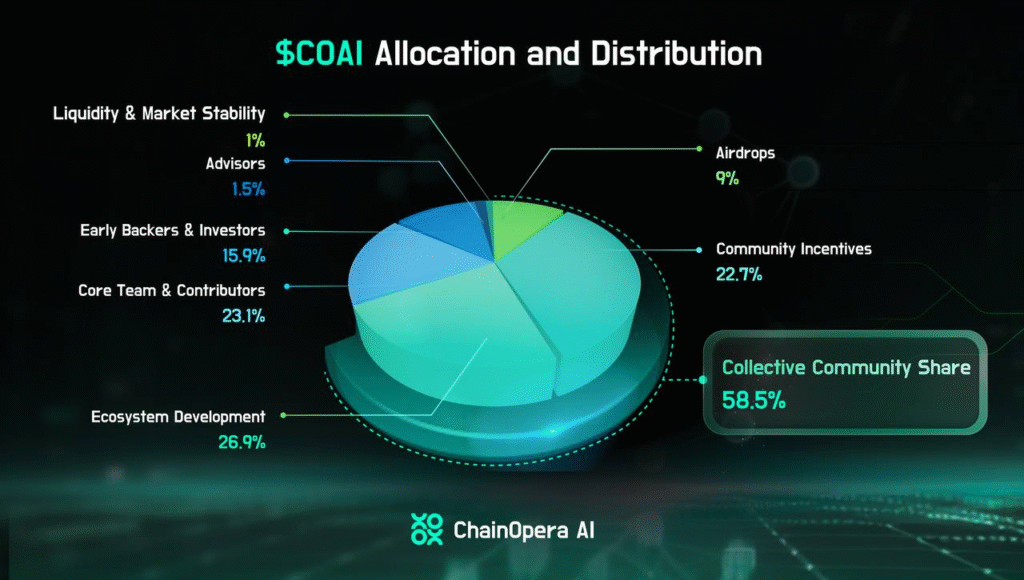
The total supply is fixed at 1 billion tokens, with distribution structured to prioritise community involvement.
Allocation and Distribution
- Collective Community Share (58.5%)
- Ecosystem Development: 26.9%
- Community Incentives: 22.7%
- Early Distribution and Airdrops: 9%
- Core Team and Contributors (23.1%)
- Allocated with long-term vesting to align incentives.
- Advisors (1.5%)
- Also subject to vesting schedules to maintain alignment.
- Early Backers and Investors (15.9%)
- Strategic investors who provided early support.
- Liquidity and Market Stability (1%)
Unlock Schedule
At the Token Generation Event, 19.65% of the supply becomes available. This includes 5.45% for ecosystem development, 9% for airdrops, 4.2% for community incentives, and 1% for liquidity. Team and investor allocations remain fully locked at this stage.
By the end of year one, the circulating supply is expected to reach around 25%. Team and backer allocations are locked for one year, followed by linear monthly unlocks over three years. The full supply will be unlocked within four years, balancing early liquidity with long-term sustainability.
Utility
The token has distinct functions across different groups.
- Users use COAI to access services in the AI Terminal and gain recognition for contributing feedback or data.
- Developers pay in COAI to publish agents, use development tools, and gain visibility within the community.
- Resource providers register their GPUs, datasets, or models on-chain using COAI, ensuring their contributions are recorded.
- Governance participants use COAI to propose upgrades, guide development, and shape ecosystem standards.
All of these functions are recorded transparently, ensuring that value within the system is distributed fairly to those who contribute.
Conclusion
ChainOpera AI is building a system where intelligence is not created behind closed doors but co-created by a community.
Through its layered infrastructure, agent-focused design, and transparent blockchain protocol, it attempts to bring both artificial intelligence and decentralised finance closer to ordinary participants.
The COAI token acts as the utility that connects these parts, rewarding users, developers, and providers while supporting governance.
The recent price surge reflects rising interest, but the long-term outcome will depend on the project’s ability to deliver its roadmap and sustain active participation.
With its focus on collaborative intelligence, ChainOpera AI represents a significant attempt to reshape how AI is built and shared.

